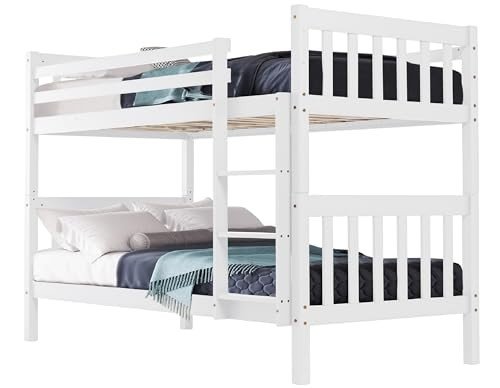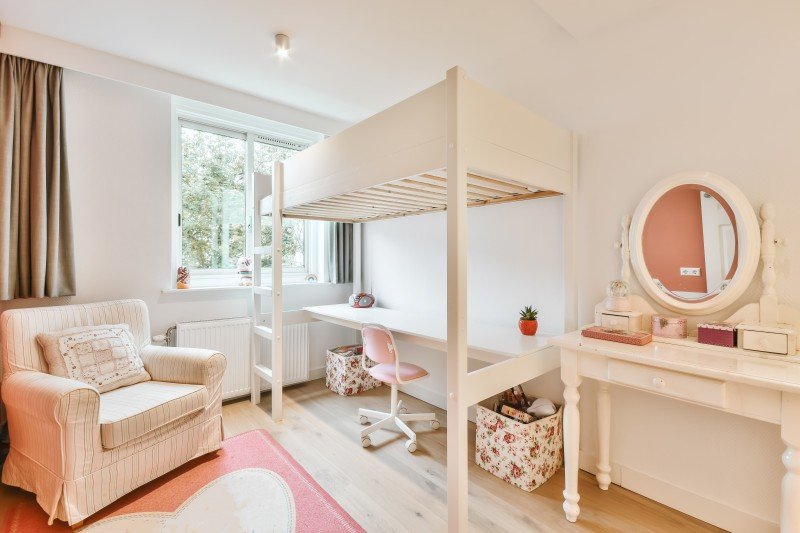11 Ways To Destroy Your Bunk Bed
페이지 정보
본문
A Comprehensive Guide to Children's Bunk Beds: Styles, Benefits, and Safety Considerations
Bunk beds have become a popular choice for households aiming to make the most of space and supply a fun sleeping environment for children. With their distinct style, they provide a creative and useful service for shared bedrooms, playrooms, and even guest accommodation. This post checks out the numerous designs of children's childrens bunk Beds beds, their advantages, security factors to consider, and addresses some often asked concerns.

The Allure of Bunk Beds
Children's bunk beds are more than just space-saving structures; they are likewise a gateway to adventurous dreams and creative play. Below is an in-depth evaluation of their many advantages.
Advantages of Bunk Beds
- Space-Saving: Bunk beds effectively utilize vertical space, making them an ideal option for smaller sized spaces.
- Playful Design: Many bunk bed styles consist of slides, camping tents, and themed components, triggering creativity and enjoyment.
- Partner Sharing: Bunk beds are best for siblings sharing a room or accommodating sleepovers.
- Flexible Use: Some models can be separated into two private beds, providing versatility as children grow.
- Storage Options: Many bunk beds come with built-in drawer storage or racks, even more boosting their practicality.
Styles of Children's Bunk Beds
The range of bunk beds offered today accommodates different choices and needs. Below is a summary of some popular styles.
| Style | Description | Best For |
|---|---|---|
| Requirement Bunk Bed | A conventional style including one bed stacked above another. | Brother or sisters sharing a room. |
| Loft Bed | Similar to a bunk bed without the bottom bunk, allows for a workspace or play location listed below. | Minimal space for play/desk. |
| L-Shaped Bunk Bed | Two beds organized in an L-shape, typically with additional sections for storage or play. | Special space layouts. |
| Twin Over Full | A twin bed over a complete bed, accommodating various sleep needs. | Growing children and teens. |
| High Sleeper | Stands even greater than a loft bed, generally featuring a desk or play location below. | Older kids needing more play/desk space. |
| Tent Bunk Bed | Bunk beds with a canopy or tent-like structure, producing a relaxing, enjoyable space. | Active and imaginative kids. |
Secret Features to Consider
When picking the right bunk bed for kids, the following functions are worth thinking about:
- Material: Bunk beds can be made from wood, metal, or a mix. Each has its special aesthetic and toughness.
- Weight Capacity: Always verify the weight limitation of the bunk bed to guarantee it can accommodate your kids securely.
- Safety Rails: Ensure the leading bunk has strong rails to prevent falls.
- Ladder Security: A properly designed ladder ought to provide simple and safe access to the upper bunk.
- Completing: Ensure any finishes are non-toxic and safe for kids.
Security Considerations
Safety is paramount when it comes to kids's bunk beds. The following guidelines need to be complied with:

- Age Appropriateness: Generally, children under six years of ages ought to not oversleep the upper bunk due to safety dangers.
- Durable Construction: Ensure the frame and materials are strong and can support the weight without drooping.
- Routine Maintenance: Periodically look for loose screws, bolts, or other elements that might need tightening.
- Clear Play Area: Keep the area around the bunk bed totally free of toys and obstacles to decrease tripping dangers.
Setting Rules for Safe Use
Developing guidelines for bunk bed usage will help ensure safety:
- Limit Jumping and Climbing: Children ought to be encouraged against leaping from the top bunk and climbing up on the sides.
- Monitoring Sleepovers: Monitor young guests while they are utilizing the bunk bed for the very first time.
- Inform on Ladder Use: Teach how to use the ladder securely, highlighting the significance of facing the ladder when climbing or down.
Frequently Asked Questions
1. What age is appropriate for a kid to oversleep the leading bunk?
Many makers recommend that children should be at least 6 years old to oversleep the upper bunk. This standard is designed to mitigate the danger of falls.
2. Can bunk beds be personalized?
Yes, many manufacturers offer personalized choices, including colors, products, and extra functions like drawers or desks.
3. Are bunk beds safe for weight?
Bunk beds have weight limits, typically varying from 200 to 400 pounds, depending on the design and product. Always examine the manufacturer's specs.
4. How do I keep and clean a bunk bed?
Routinely look for loose parts, keep the bed clean by cleaning down surfaces, and guarantee the bed linen is fresh to promote a safe and hygienic sleep environment.
5. Can bunk beds be separated into specific beds?
Numerous bunk beds include a choice to separate them into 2 private beds, providing long-lasting versatility.
Children's bunk beds are more than simple furnishings; they are a practical, versatile, and creative component of a kid's space. With different designs available and various safety considerations to keep in mind, moms and dads can select the ideal bed that fits their space, meets their kids's needs, and instills a sense of experience. By understanding the advantages, styles, and safety procedures associated with bunk beds, households can create a delightful and protected sleeping environment for their kids. Whether for siblings sharing a space or space-saving options, bunk beds remain a precious option for lots of families.
-
- 이전글
- 무료성인만화주소ヴ 직시 (1080p_26k)무료성인만화주소ヴ #hvu
- 25.07.10
-
- 다음글
- 일본AVヴ 직시 (1080p_26k)일본AVヴ #hvu
- 25.07.10


